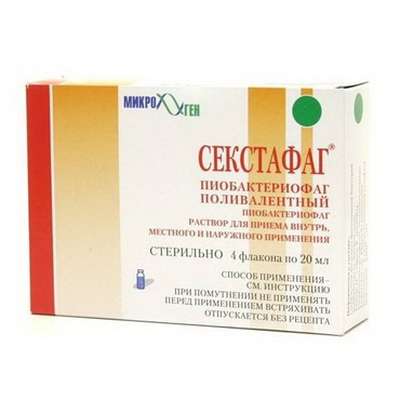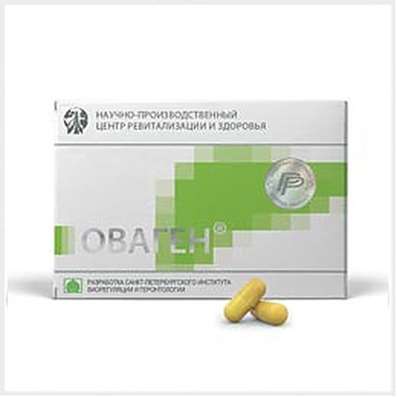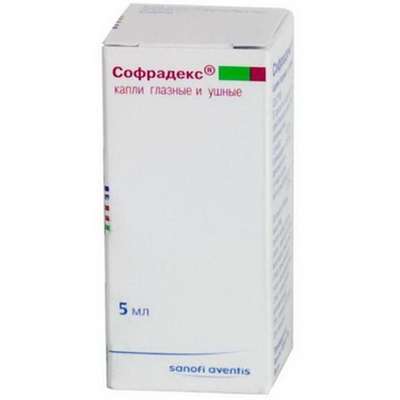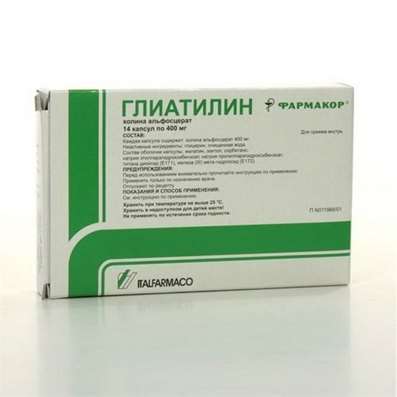Instruction for use: Methotrexate
I want this, give me price
Trade name of the drug – Metoject
The Latin name of the substance Methotrexate
Methotrexatum (genus. Methotrexati)
Chemical name
N- [4 - [[(2,4-Diamino-6-pteridinyl) methyl] methylamino] benzoyl] -L-glutamic acid (and as the disodium salt)
Gross formula
C20H22N8O5
Pharmacological group:
Antimetabolites
The nosological classification (ICD-10)
C00-C14 Malignant neoplasms of the lip, oral cavity and pharynx
C15-C26 Malignant neoplasms of the digestive system
C16 Malignant neoplasm of stomach: Stomach cancer; Stenosing gastric cancer; Metastatic stomach cancer; Disseminated adenocarcinoma of the stomach; Tumors of the stomach
C30 Malignant neoplasm of nasal cavity and middle ear: Nasal cancer
C30-C39 Malignant neoplasms of respiratory and thoracic organs
C31 Malignant neoplasm of accessory sinuses
C32 Malignant neoplasm of larynx: Squamous cell carcinoma of larynx; Cancer of the larynx; Tumors of the larynx
C34 Malignant neoplasm of bronchi and lung: Small cell anaplastic lung tumors; Small cell and non-small cell lung cancer; Small cell lung cancer; Small cell lung cancer; Locally-distributed small cell lung cancer; Locally advanced non-small cell lung cancer; Undifferentiated lung cancer; Non-small cell lung cancer; Bronchogenic Cancer; Non-small cell lung cancer; Inoperable locally advanced non-small cell lung cancer; Cancer of the bronchi; Lungs' cancer; Small cell lung cancer; Lung cancer; Small cell lung cancer; Non-small cell lung cancer; Lung cancer of squamous cell; Recurrent non-small cell non-small cell lung cancer; Small cell lung carcinoma; Inoperable metastatic non-small cell lung cancer; Lung carcinoma; Ovsyocellular carcinoma of the lung; Disseminated lung cancer; Tumors of the lungs
C40 Malignant neoplasm of bones and articular cartilage of extremities: Bone marrow tumors; Tumors of bones and joints
C41 Malignant neoplasm of bones and articular cartilages of other and unspecified sites (osteosarcoma, osteogenic cancer): Malignant bone lymphoma; Bone reticulosaurus; Ewing's tumor; Ewing's sarcoma; Synovial sarcoma; Ewing's sarcoma; Bone marrow tumors; Tumors of bones and joints
C44 Other malignant neoplasms of the skin: Malignant skin tumors; Basalioma; Basaliomas; Basal cell epithelioma; Basal cell carcinoma; Basal cell carcinoma of the skin; Basal cell carcinoma of the skin; Malignant reticulosis; Ulcerated basal cell; Skin Cancer; Skin carcinoid; Skin Lymphoma; Primary reticulosis; Primary skin reticulosis; Squamous cell carcinoma; Squamous cell carcinoma of the skin; Superficial skin tumors; Skin cancer; Reticulosis of the skin; Skin Reticulosarcoma; Sarcomatosis of the skin; Skin cancer (endophytic forms of I and II stages); Squamous cell carcinoma and basal cell carcinoma
C45 Mesothelioma: Pleural Mesothelioma; Hollowers
C45-C49 Malignant neoplasms of mesothelial and soft tissue
C49 Malignant neoplasm of other types of connective and soft tissue: Leiomyosarcoma; Angiosarcoma; Rhabdomyosarcoma; Rabdosarcoma; Soft tissue sarcoma; Embryonic rhabdomyosarcoma; Metastatic squamous cell carcinoma of the soft tissues of the head and neck
C50 Malignant neoplasm of breast: Nipple cancer and areola of mammary gland; Breast carcinoma; The hormone-dependent form of recurrent breast cancer in women in menopause; Hormone-dependent breast cancer; Disseminated breast carcinoma; Disseminated breast cancer; Malignant breast cancer; Malignant neoplasm of breast; Contralateral breast cancer; Locally advanced or metastatic breast cancer; Locally-distributed breast cancer; Locally-recurring breast cancer; Metastatic breast carcinoma; Metastasis of breast tumors; Metastatic breast carcinoma; Inoperable breast carcinoma; Incompatible breast cancer; Breast cancer in women with metastases; Breast cancer in men with metastases; Breast Cancer; Breast cancer in men; Mammary cancer; Breast cancer with distant metastases; Breast cancer in postmenopausal women; Breast cancer hormone-dependent; Breast cancer with local metastases; Breast cancer with metastases; Breast cancer with regional metastases; Breast cancer with metastases; Common hormone-dependent forms of breast cancer; Common Breast Cancer; Recurrent Breast Cancer; Recurrence of breast tumors; Breast cancer; Estrogen-dependent breast cancer; Estrogen-Dependent Breast Cancer; Disseminated breast cancer with overexpression of HER2; Tumors of the mammary glands
C53 Malignant neoplasm of cervix: Intraepithelial neoplasm of cervix uteri; Cervical carcinoma; Cervical cancer
C54 Malignant neoplasm of uterus: Uterine cancer; Cancer of the body of the uterus; Sarcoma of the uterus
C56 Malignant neoplasm of ovary: Pseudomucinous ovarian adenocarcinoma; Germinogenic swelling of the ovary; Germinogenic swelling of the ovaries; Malignant ovarian tumor; Carcinoma of the ovary mucinous; Ovarian carcinoma; Metastatic malignant tumor of the ovaries; Metastatic ovarian carcinoma; Metastatic ovarian cancer; Metastatic ovarian cancer; Tumor of the ovaries; Cancer from the pseudomucinous cyst; Cancer of the ovary; Ovarian Cancer; Common metastatic ovarian cancer; Common Ovarian Cancer; Trophoblastic tumors; Chorionic carcinoma; Ovarian cystadenocarcinoma mucinous; Cystocarcinoma of the ovary pseudomucinous; Epithelial tumor of the ovaries
C58 Malignant neoplasm of placenta: Placental chorion carcinoma; Trophoblastic Tumors; Choriocarcinoma of the uterus; Chorionic carcinoma; Chorionic carcinoma of the uterus; Chryion carcinoma of the placenta; Chorionepithelioma of the uterus; Choriocarcinoma
C62 Malignant neoplasm of testis: Adenocarcinoma of testis; Germicogenic testicular carcinoma; Germigenic testicular tumor; Malignant testicular tumor; Carcinoma of the testes; Locally advanced refractory testis cancer; Metastatic malignant testicular tumor; Metastatic Testicular Carcinoma; Metastatic choriocarcinoma of the testes; Non-metastatic choriocarcinoma; Testicular Tumor; Testicular tumor; Testicular cancer; Testicular Seminoma; Teratoblastoma; Trophoblastic tumors; Chorionic carcinoma; Embryonic Cancer; Choriocarcinoma; Testicular Cancer; Seminoma; Testicular tumors
C67 Malignant neoplasm of bladder: Metastatic bladder cancer; Tumor of the bladder; Bladder cancer; Bladder cancer superficial; Malignant tumor of the bladder; Malignant neoplasms of the bladder; Bladder carcinoma; Transitional cell carcinoma of the bladder; Tumors of the bladder
C69.2 Malignant neoplasm of retina: Retinoblastoma
C71 Malignant neoplasm of brain: Astrocytoma; Glyoblastoma; Neuroblastoma; Tumors of the brain; Brain tumor; A brain tumor; Glioma sarcomatous; Metastatic brain tumors; Anaplastic astrocytoma; Metastases in the brain; Cancer of the brain; Malignant neoplasm of brain; Pinealoma; Primary brain tumor; Primary malignant neoplasm of brain; Ependymoma; Malignant glioma; Neurilemoma; Schwannogloida; Schwannoma; Fibroblastoma perineural; Pineal adenoma; Oligodendroglioma; Tumors of the cerebral hemispheres; Oligodendrocytoma; Chemodectomy; Choroid papilloma; Granuloblastoma; Embryonic Neuroglioma; Neurospangioblastoma; Neurospringioma; Spheroblastoma; Choroiditis; Tumors of the brain
C76.0 Malignant neoplasm of head, face and neck: Malignant head and neck tumor; Malignant neoplasm of head and neck; Locally spread squamous cell carcinoma of the head and neck; Metastatic squamous cell carcinoma of the head; Metastatic squamous cell carcinoma of the neck; Neck Tumor; Squamous cell carcinoma of the head and neck; Head and neck cancer; Recurrent squamous cell carcinoma of the head; Recurrent squamous cell carcinoma of the neck; Metastatic squamous cell carcinoma of the head and neck
C81 Hodgkin's disease [lymphogranulomatosis]: Paltauf-Sternberg disease; The generalized form of Hodgkin's disease; Lymphogranulomatosis; Hodgkin's disease; Hodgkin's lymphoma; Hodgkin's malignant lymphoma; Hodgkin's lymphoma; Lymphoproliferative diseases; Reticulosis fibromyaloid; Pelya-Ebstein fever
C81-C96 Malignant neoplasms of lymphoid, hematopoietic and related tissues: Hematoblastosis; Hematosarcoma; Leukemia; Lymphoma of the malignant; Tumors of lymphoid, hematopoietic and related tissues
C82 Follicular [nodular] non-Hodgkin's lymphoma: Brill-Simmers disease; Malignant lymphoma; Hepatic Lymphoma; Recurrent non-Hodgkin's lymphoma; Follicular B-cell non-Hodgkin's lymphoma; Follicular lymphoma; Lymphoma of the liver
C83 Diffuse non-Hodgkin's lymphoma: Diffuse B-large-cell non-Hodgkin's lymphoma; Malignant lymphoma; Malignant lymphoma, especially of the histiocytic type; Lymphoblastic non-Hodgkin's lymphoma; Lymphoma non-Hodgkin's diffuse; Hepatic Lymphoma; Recurrence of lymphoma; Recurrent non-Hodgkin's lymphoma; Lymphoma of the liver
C83.3 Large-cell (diffuse) non-Hodgkin's lymphoma: Reticulosarcomas; Reticulosarcoma with involvement of peripheral lymph nodes; Histiocytic lymphoma; Lymphoma of the histiocytic; Reticulosarcoma; Reticular cell sarcoma
C83.7 Burkitt's Tumor: Burkitt's Lymphoma
C84.0 Mushroom mycosis: Mycosis mushroom; Fungoid granuloma
C84.1 Cesary's disease: Cesary's syndrome; Cesari Syndrome
C85 Other and unspecified types of non-Hodgkin's lymphoma: Lymphoma of mixed type; Lymphomas from cells of the mantle zone; Malignant lymphoma; Lymphoma non-Hodgkin's disease; Lymphocytic lymphoma
C85.0 Lymphosarcoma
C91.0 Acute lymphoblastic leukemia: Recurrence of acute leukemia; Blast Crisis; Blest Crisis; Lymphoblastic leukemia; Lymphoid blast crisis; Acute lymphoblastic leukemia; Acute lymphoblastic leukemia in adults and children; Acute lymphoblastic leukemia in children; Acute lymphatic leukemia
L40 Psoriasis: Chronic plaque psoriasis with diffuse; generalized psoriasis; Psoriasis of the scalp; hairy parts of the skin; A generalized form of psoriasis; Psoriazoformny dermatitis; Psoriasis complicated with erythroderma; disabling psoriasis; Isolated psoriatic plaque; Eksfolliativny psoriasis; psoriatic erythroderma; Psoriasis with eczematization; Hyperkeratosis in psoriasis; Inverse psoriasis; Psoriasis ekzemopodobnye; dermatoses psoriazoformny; Psoriasis genitals; Psoriasis lesions with hairy areas of the skin; erythrodermic psoriasis; Chronic psoriasis of the scalp; Chronic psoriasis; ordinary psoriasis; refractory psoriasis; Koebner phenomenon; psoriasis
M06.9 Rheumatoid arthritis, unspecified: Rheumatoid arthritis; Pain syndrome in rheumatic diseases; Pain in rheumatoid arthritis; Inflammation in rheumatoid arthritis; Degenerative forms of rheumatoid arthritis; Children's rheumatoid arthritis; Exacerbation of rheumatoid arthritis; Acute articular rheumatism; Rheumatic arthritis; Rheumatic polyarthritis; Rheumatoid arthritis; Rheumatic polyarthritis; Rheumatoid arthritis; Rheumatoid arthritis; Rheumatoid arthritis of active course; Rheumatoid periarthritis; Rheumatoid polyarthritis; Acute rheumatoid arthritis; Acute rheumatism
CAS code
59-05-2
Characteristics of the substance Methotrexate
Antimetabolite group of structural analogues of folic acid. Yellow or orange-yellow crystalline powder. Virtually nerastvorim in water and alcohol, hygroscopic and unstable to the action of light. It is available as a lyophilized porous mass from yellow to yellow-brown in color, soluble in water. Molecular weight 454.45.
Pharmacology
Mode action - Antitumor, cytostatic, immunosuppressive.
It inhibits dihydrofolate reductase (DHF), which converts dihydrofolic acid to tetrahydrofolic acid, which is a donor of single-carbon groups in the synthesis of purine nucleotides and thymidylate, necessary for DNA synthesis. In addition, in the cell, methotrexate undergoes polyglutaminization with the formation of metabolites, which have an inhibitory effect not only on DHF, but also on other folate-dependent enzymes, including thymidylate synthetase, 5-aminoimidazole-4-carboxamidoribonucleotide (AICAR) transamylase.
Suppresses the synthesis and repair of DNA, cellular mitosis, to a lesser extent affects the synthesis of RNA and protein. Has S-phase specificity, is active against tissues with high proliferative activity of cells, inhibits the growth of malignant neoplasms. The most sensitive are actively dividing cells of tumors, as well as bone marrow, embryo, mucous membranes of the mouth, intestines, bladder.
Has cytotoxic effect, has teratogenic properties.
In studies on carcinogenicity, it was found that methotrexate causes chromosomal damage in somatic cells of animals and human bone marrow cells, but this did not allow us to draw definitive conclusions about the carcinogenicity of the drug.
The effectiveness of methotrexate in the treatment of bronchial asthma (steroid-dependent), Crohn's disease, chronic ulcerative colitis, fungal mycosis (late stages), Reiter's syndrome, reticular erythroderma (Cesari syndrome), psoriatic arthritis, juvenile rheumatoid arthritis, to prevent "graft versus host" .
After oral administration at a dose of 30 mg / m2 and below, it is rapidly and completely absorbed from the digestive tract (bioavailability of about 60%). In children with leukemia, the absorption index varies from 23 to 95%. Absorption is significantly reduced when the dose exceeds 80 mg / m2 (possibly due to the saturation effect). Cmax is achieved after 1-2 hours with oral and 30-60 minutes with an IM injection. Admission with food slows down the time it takes to reach Cmax for about 30 minutes, but the level of absorption and bioavailability do not change.
After IV introduction, it is quickly distributed within a volume equivalent to the total volume of body fluids. The initial volume of distribution is 0.18 l / kg (18% of body weight), the equilibrium volume of distribution is 0.4-0.8 l / kg (40-80% of body weight).
50-60% of the methotrexate circulating in the vascular bed is associated with proteins (mainly with albumin).
Through the BBB when ingested or parenterally passes only to a limited extent (dose-dependent); After intrathecal administration in significant amounts enters the systemic circulation. It is secreted into breast milk, passes through the placenta (it has a teratogenic effect on the fetus).
Metabolised in liver cells and other cells to form polyglutamates (inhibitors of DHF and thymidylate synthetase), which can be converted into methotrexate by the action of hydrolases. Partially metabolized by intestinal microflora (after ingestion). A small amount of polyglutamine derivatives is retained in the tissues for a long time. The retention time and duration of action of these active metabolites depends on the type of cells, tissue and type of tumor. It is slightly metabolized (with usual doses) to 7-hydroxymethotrexate (solubility in water is 3-5 times lower than in methotrexate). Accumulation of this metabolite occurs when taking high doses of methotrexate, prescribed for the treatment of osteosarcoma.
The final T1 / 2 dose-dependent and is 3-10 hours with the introduction of low and 8-15 hours - high doses of methotrexate. 80-90% IV of the administered dose is excreted by the kidneys unchanged by glomerular filtration and active tubular secretion within 24 hours, and less than 10% with bile. The clearance of methotrexate varies widely, it decreases at high doses.
Removal of the drug in patients with severe ascites or effusions into the pleural fluid is slow.
Application of the substance Methotrexate
Haryonocarcinoma of the uterus, acute lymphocytic leukemia, CNS tumors (leukemoid infiltration of the meninges), breast cancer, head and neck cancer, lung, bladder, stomach cancer; Hodgkin's disease, non-Hodgkin's lymphoma, retinoblastoma, osteosarcoma, Ewing's sarcoma, soft tissue sarcoma; Refractory psoriasis (only if the diagnosis is established in case of resistance to other therapies), rheumatoid arthritis.
Contraindications
Hypersensitivity, immunodeficiency, anemia (including hypo- and aplastic), leukopenia, thrombocytopenia, leukemia with hemorrhagic syndrome, hepatic or renal insufficiency.
Restrictions
Infectious diseases, oral and gastrointestinal ulcers, recent surgery, gout or renal concrements in the history (risk of hyperuricemia), elderly and children.
Pregnancy and breast-feeding
Contraindicated in pregnancy (may cause fetal death or cause congenital malformations).
The action category for fetus by FDA is X.
At the time of treatment should stop breastfeeding.
Side effects of Methotrexate
From the nervous system and sensory organs: encephalopathy (especially when administering multiple doses intrathecally, as well as in patients after brain irradiation), dizziness, headache, visual impairment, drowsiness, aphasia, back pain, stiff neck muscles, Convulsions, paralysis, hemiparesis; In some cases - fatigue, weakness, confusion, ataxia, tremor, irritability, coma; Conjunctivitis, excessive lacrimation, cataract, photophobia, cortical blindness (at high doses).
From the cardiovascular system (hematopoiesis, hemostasis): anemia, leukopenia, thrombocytopenia, neutropenia, lymphopenia (especially T-lymphocytes), hypogammaglobulinemia, hemorrhage, septicemia due to leukopenia; Rarely pericarditis, exudative pericarditis, hypotension, thromboembolic changes (arterial thrombosis, cerebral thrombosis, deep vein thrombosis, renal vein thrombosis, thrombophlebitis, pulmonary embolism).
On the part of the respiratory system: rarely - interstitial pneumonitis, pulmonary fibrosis, exacerbation of pulmonary infections.
On the part of the intestine: gingivitis, pharyngitis, ulcerative stomatitis, anorexia, nausea, vomiting, diarrhea, difficulty swallowing, melena, ulceration of the gastrointestinal tract, gastrointestinal bleeding, enteritis, liver damage, fibrosis and cirrhosis (the probability is increased in patients, Receiving continuous or long-term therapy).
From the genitourinary system: cystitis, nephropathy, azotemia, hematuria, hyperuricemia or severe nephropathy, dysmenorrhea, unstable oligospermia, violation of the process of oogenesis and spermatogenesis, fetal defects.
From the skin: skin erythema, itching, hair loss (rarely), photosensitization, ecchymosis, acne, furunculosis, peeling, de- or hyperpigmentation of the skin, blistering, folliculitis, telangiectasia, toxic epidermal necrolysis, Stevens-Johnson syndrome.
Allergic reactions: fever, chills, rash, hives, anaphylaxis.
Other: immunosuppression, rarely - opportunistic infection (bacterial, viral, fungal, protozoal), osteoporosis, vasculitis.
Interaction
The simultaneous use of NSAIDs, barbiturates, sulfonamides, corticosteroids, tetracyclines, trimethoprim, chloramphenicol, paraaminobenzoic and paraaminohippuric acids, probenecid, promotes the enhanced and prolonged action of methotrexate, which leads to intoxication. Folic acid and its derivatives reduce efficiency. Increases the effect of indirect anticoagulants (coumarin or indanedione derivatives) and increases the risk of bleeding. Preparations of the penicillin group reduce the renal clearance of methotrexate. With the simultaneous use of methotrexate and asparaginase, the action of methotrexate may be blocked. Neomycin (for oral administration) may reduce the absorption of methotrexate (for oral administration). Drugs that cause abnormal blood changes increase leukopenia and / or thrombocytopenia if these drugs have the same effect as methotrexate on bone marrow function. Other drugs that cause bone marrow depression, or radiation therapy, potentiate the effect and addively inhibit bone marrow function. A synergistic cytotoxic effect with cytarabine is possible with simultaneous use. With the simultaneous use of methotrexate (intrathecally) with acyclovir (parenteral), neurological disorders are possible. In combination with live viral vaccines, it can cause intensification of the replication process of the vaccine virus, increase the side effect of the vaccine and decrease the production of antibodies in response to the administration of both live and inactivated vaccines.
Overdose
Symptoms: No specific symptoms.
Treatment: immediate administration of calcium folinate to neutralize the myelotoxic effect of methotrexate (inside, in / m or in / in). The dose of calcium folinate should be at least equal to the dose of methotrexate, it must be administered within the first hour; Subsequent doses are administered as needed. Increase the hydration of the body, urine is alkalinized to avoid precipitation of the drug and its metabolites in the urinary tract.
Routes of administration
Inside, parenteral (IM, intravenously, intraarterially, intrathecally), depending on the indications.
Precautionary measures
Apply under close medical supervision. To timely detect symptoms of intoxication, it is necessary to monitor the state of peripheral blood (the number of leukocytes and platelets: first a day, then every 3-5 days for the first month, then 1 every 7-10 days, in remission - 1 time in 1-2 Week), hepatic transaminase activity, kidney function, periodically perform chest X-ray. Methotrexate therapy is discontinued if the number of lymphocytes in the blood is less than 1.5 · 109 / L, the amount of neutrophils is less than 0.2 · 109 / L, the number of platelets is less than 75 · 109 / L. Increasing the level of creatinine by 50% or more of the original content requires a repeat measurement of creatinine clearance. An increase in the level of bilirubin requires intensive detoxification therapy. The study of bone marrow hematopoiesis is recommended before the treatment, 1 time during the treatment and at the end of the course. The level of methotrexate in the plasma is determined immediately after the end of the infusion, and also after 24, 48 and 72 hours (to detect signs of intoxication, which is stopped by the introduction of calcium folinate).
During treatment in high and high doses, it is necessary to monitor the pH of the urine (the reaction should be alkaline on the day of administration and in the next 2-3 days). To do this, iv / drop (drip) is administered a mixture of 40 ml of 4.2% sodium bicarbonate solution and 400-800 ml isotonic sodium chloride solution on the eve, on the day of treatment and in the following 2-3 days. Treatment of methotrexate in elevated and high doses is combined with enhanced hydration (up to 2 liters of fluid per day).
Particular attention should be paid to cases of decreased hematopoietic function of the bone marrow caused by the use of radiation therapy, chemotherapy or prolonged use of certain drugs (sulfonamides, amidopyrine derivatives, chloramphenicol, indomethacin). In such cases, the general condition usually worsens, which is the greatest danger for the young and the elderly.
With the development of diarrhea and ulcerative stomatitis, methotrexate therapy must be discontinued, otherwise it can lead to the development of hemorrhagic enteritis. When signs of pulmonary toxicity (especially dry cough without sputum) are indicated, treatment with methotrexate should be discontinued because of the risk, possibly, of an irreversible toxic effect on the lungs. Be wary appoint patients with impaired liver function and / or kidney (dose is reduced).
It should avoid the use of alcohol and drugs that have hepatotoxicity, t. Their use in the treatment of methotrexate increases the risk of liver damage; Prolonged exposure to the sun. When combined treatment should take each drug at the appointed time; When the dose is missed, the drug is not taken, the dose is not doubled.
During the period of treatment, vaccination with viral vaccines is not recommended, contact with people who received a polio vaccine against sick bacterial infections should be avoided. Use live viral vaccines in patients with leukemia in the remission phase should not be at least 3 months after the last course of chemotherapy. Immunization with oral polio vaccine for people in close contact with such a patient, especially family members, should be postponed.
The appearance of signs of oppression of bone marrow function, unusual bleeding or hemorrhage, black tarry stools, blood in urine or feces, or pinpoint red spots on the skin requires immediate medical attention.
Take care to avoid accidental cuts with sharp objects (safety razor, scissors), avoid contact sports or other situations in which there may be a bleeding or trauma.
The presence of ascites, pleural exudates, effusion in the field of operating wounds promotes the accumulation of methotrexate in tissues and the intensification of its action, which can lead to intoxication of the body.
Dental interventions should be completed as far as possible before the start of therapy or postponed until the picture of blood is normalized (possibly increasing the risk of microbial infections, slowing healing, bleeding gums). During treatment, use caution when using toothbrushes, threads or toothpicks.
Patients with methotrexate-induced thrombocytopenia are advised to follow special precautions (limiting the frequency of venipunctures, refusing intravenous injections, conducting urinalysis, feces and secrets for concealed blood, preventing constipation, refusing to use acetylsalicylic acid, etc.). ), With leukopenia - carefully monitor the development of infections. In patients with neutropenia with increasing temperature, the use of antibiotics must begin empirically.
Special instructions
Methotrexate for injection as a lyophilized powder due to the presence of a preservative is not suitable for intrathecal administration.
It is necessary to avoid conception during treatment with methotrexate and after it (men - 3 months after treatment, women - at least one ovulation cycle). After the course of treatment with methotrexate, calcium folinate is recommended to reduce the toxic effects of high doses of the drug.
It is necessary to observe the necessary rules for the use and destruction of the drug.

 Cart
Cart





